With Both Hands Classics: Great Teacher Onizuka
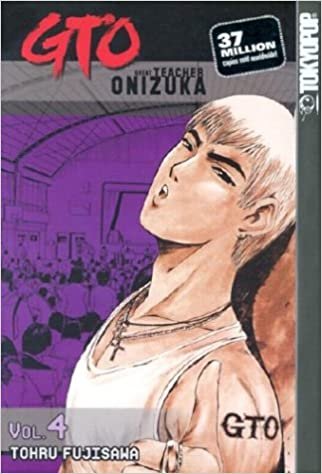
This is the first installment of what I hope to make a regular feature here at With Both Hands, a reflection on a key work of fiction that I find myself returning to again and again that I will call With Both Hands Classics.
For this inaugural edition, let’s look to the manga Great Teacher Onizuka, by Fujisawa Tohru. I own all 25 volumes of this series, and I recently picked it up again and was pleased by how funny and incisive this adventure story for teenaged boys is. I roar with laughter every time I read it. Like many shonen manga, the art style often veers into the grotesque, with hilariously exaggerated facial expressions and absurd situations rendered in loving detail.
However, GTO isn’t just a boy’s adventure story, it is also a brutal satire of Modern Japan in the mode of Aristophanes. Even though the manga is now twenty-five years old, and there is a real cultural gulf between Japan and America, Fujisawa’s targets resonate with me. Writer J. Manfred Weichsel recently gave an interview explaining what satire is:
You don’t make fun of real-life things you love. You make fun of the things you hate. Satire employs ridicule, mockery, and derision to attack human stupidity, weakness, and vice, as well as social convention and the hypocrisy at the root of propriety and decorum.
The world that Onizuka lives in is one of spiritual poverty in the midst of material plenty. Feral children roam the schools, preying upon one another. They are in turn preyed upon by a host of adult deviants who use their social status to deflect unwelcome inquiries from the wider society. The losers at the bottom of this pyramid of misery simply kill themselves in shame, while everyone else just looks for another victim.
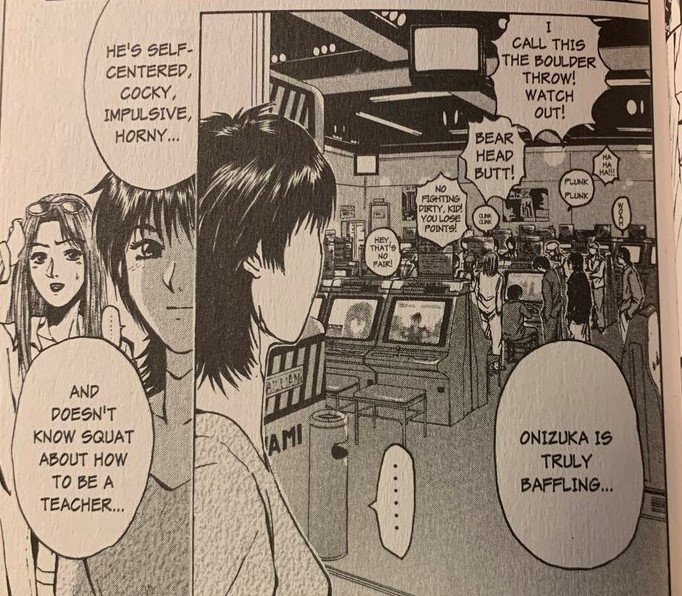
All GTO manga images copyright Tohru Fujisawa
Into this mess steps Onizuka: former juvenile delinquent, graduate of the Japanese equivalent of a directional state university, comically improvident, and utterly unqualified to teach. And the only hope those kids have. In a manner reminiscent of a Western, only an outsider can clean up the mess because everyone else is too entangled in what caused it in the first place. Bleached blonde and bedecked with earrings, Onizuka represents the opposite of what Japanese society values, which is what makes him the perfect man to fix its mistakes.
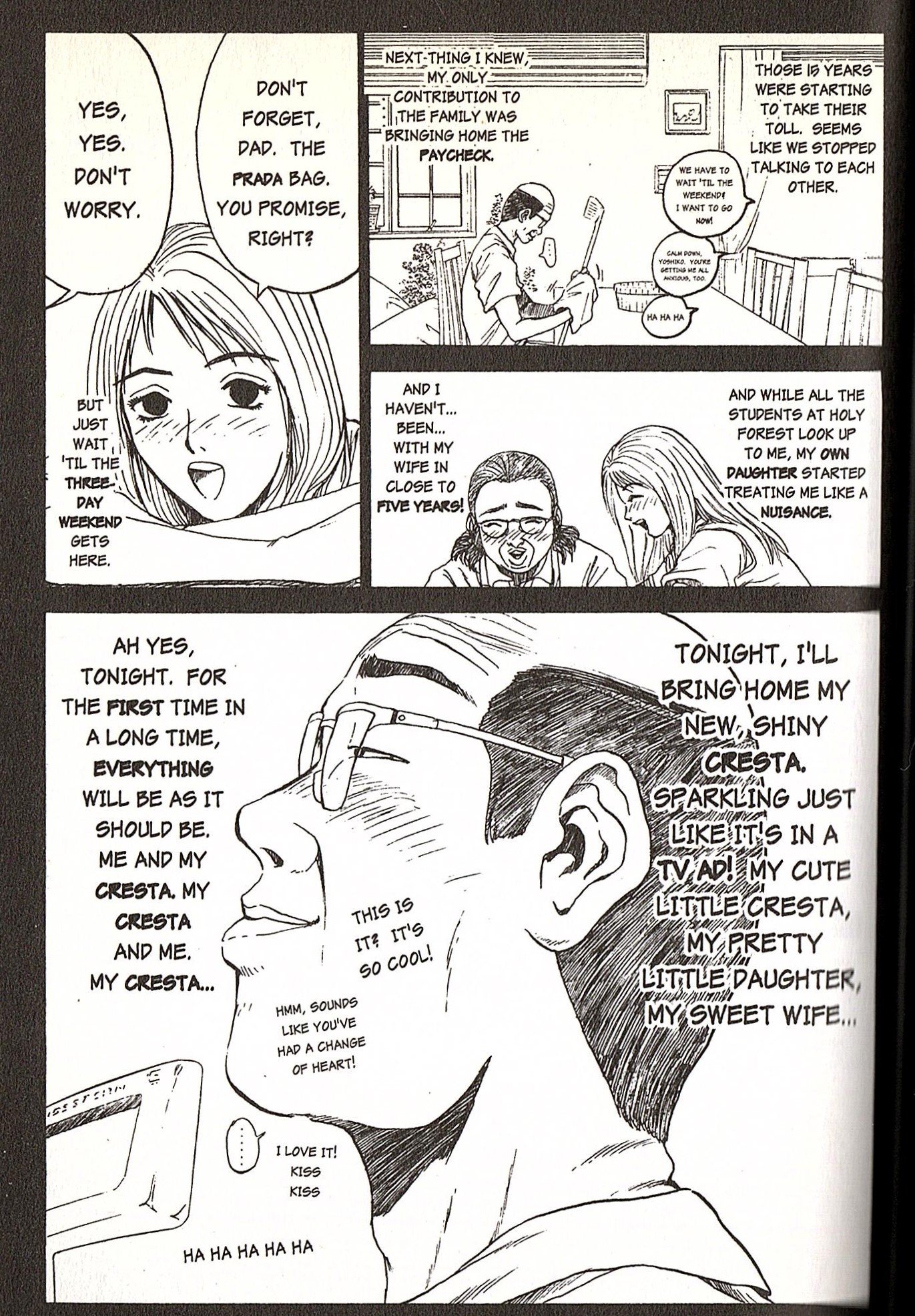
This contrast is personified in Vice Principal Uchiyamada, a tyrant of an administrator who is revealed to be a weak and vain man, hopelessly trying to buy the love of his utterly materialistic wife and daughter. If anyone could be said to have made it in life, it should be Uchiyamada, with his stable, respectable job and picture perfect family. But it is all hollow and rotten.
Onizuka destroys Uchiyamada’s beloved Toyota Cresta [twice!], literally crushing the man’s dreams before his eyes. But in each case, Onizuka was saving a student who was trying to kill himself. That Uchiyamada is enraged at Onizuka for breaking his car instead of overjoyed that one of his students is not dead is a microcosm of everything that Fujisawa is holding up for ridicule.
This is a pattern that Fujisawa returns to again and again as he eviscerates the hypocrisies of his culture. The characters who hate Onizuka are revealed to be petty grasping careerists and sick perverts. Fujisawa uses lenses of class, of education, of intelligence, of masculinity, of generation, and of virtue to blast everything he hates. And boy do they all deserve it.
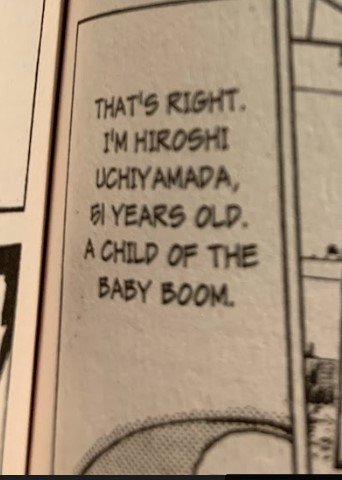
I completely missed the generational conflict in GTO when I read it as a young man, but it is not at all subtle. Uchiyamada (born in 1946) is a failed Baby Boomer and Onizuka (born in 1975) is the rising Gen X come to set things right.
The Japanese generational conflict in GTO is more comprehensible to an American or European than you might expect. In the sense of Spengler or Toynbee’s models of history, Japan was in a different part of the civilizational cycle than the West. Or at least it was, until two American-led events inadvertently synchronized our culture and theirs: Commodore Perry’s Black Fleet and the defeat and restructuring of Japan in the Second World War.
Thus, when Uchiyamada says he is a Baby Boomer, that means almost exactly the same thing as it would for an American. Japanese Boomers enjoyed a huge economic and cultural windfall, even accounting for the devastation of World War Two. Fujisawa himself is a member of a forgotten generation, born in 1967 he is the youngest of Generation Jones that comes in between Boomers and their Gen X children. Fujisawa isn’t having any of the typical Boomer entitlement, and Uchiyamada utterly embodies that attitude.
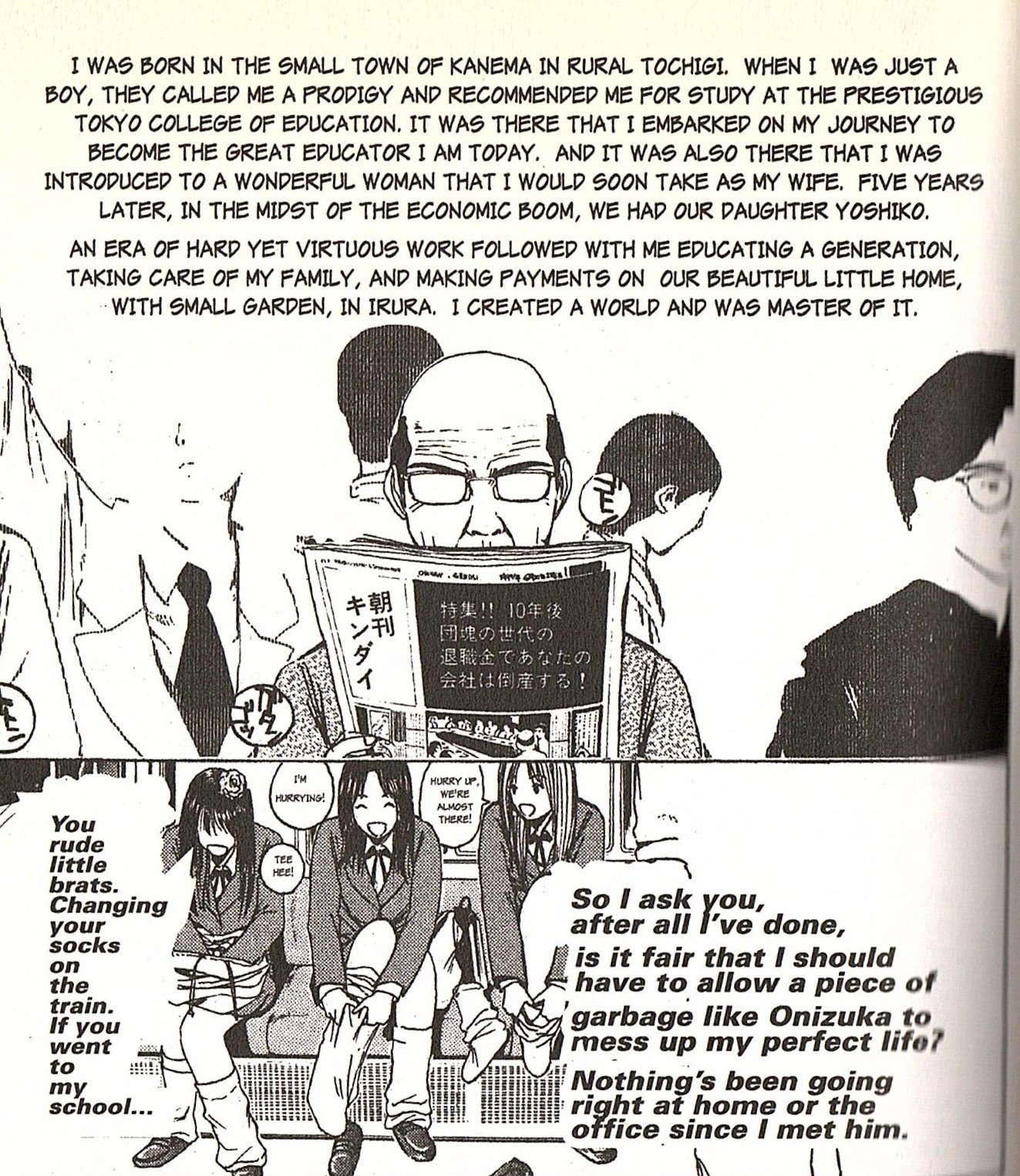
Plenty of Onizuka’s Gen X contemporaries are wicked too, and so Fujisawa uses other angles of attack against them. Sexual perversion in particular is often found in Onizuka’s antagonists. Everyone assumes that Onizuka must be a massive perv, and Fujisawa uses the visual medium to great effect here to make the reader assume that too. You get Onizuka fantasizing about doing something that he never actually does, but then someone of purportedly greater status and virtue almost always then does that thing instead. When it comes down to it, Onizuka has a far greater capacity to resist temptation than anyone expects. Possibly even himself.
Which makes me wonder about Fujisawa’s intent for Onizuka as a character. I picked the cover of volume 4 as the top image in the post because you can clearly see that Onizuka wears a crucifix. Fujisawa often draws Onizuka wearing one. Now, it is of course possible that it is just a random piece of jewelry, as Japan is one of the least Christian places on the face of the earth. But in the cultural exchange that synchronized Japan with the West, a Japanese fascination with Christianity was created.
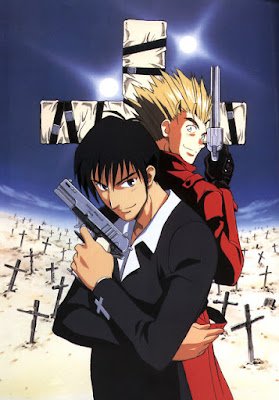
You can see what this looks like in many of the popular Japanese manga and anime that came out around the same time as GTO. As you might expect, that interest runs the gamut from stage dressing to conversion experience. I don’t know what it means here, as I’ve never read or heard anything from Fujisawa on the subject of Christianity. I just suspect it means something, because Fujisawa’s visual style can be insanely detailed, and nothing is included by accident.
Also, from a purely structural point of view, Onizuka has come to restore order and justice. Which is another hilarious contrast, insofar as Onizuka personally is chaotic. But in practice, what happens is that Onizuka, unbound by convention, propriety, or even good judgment, acts to re-integrate the alienated Gen Y students he teaches into society. He does this by bringing the mighty low, by balancing the scales of justice, and restoring his students’ dignity. In usually the most undignified manner possible.
A few notable early examples are Onizuka taming the wild son of a single mother who stubbornly had him when she was thirteen, despite pressure to abort him, or Onizuka lifting up the big-breasted and dim-witted student we might today politely consider “intellectually disabled”. But perhaps the greatest example is Onizuka’s breathtakingly stupid act of restorative justice for the boy who tried to kill himself [twice]. The same boy whose suicide attempts led to the fiery destruction of Uchiyamada’s car.
The boy is short and awkward, without smarts or cool to trade for social status. When Onizuka first comes to the school, he finds the boy tied up in a locker in the middle of the night, soaked in urine. Everyone is cruel to him, but the worst is one of the local queen bees who mocks him sexually. In response, Onizuka helps the boy get revenge on his oppressors, stripping the queen bee and her attendants in a karaoke booth and taking blackmail photos in an act of poetic justice.
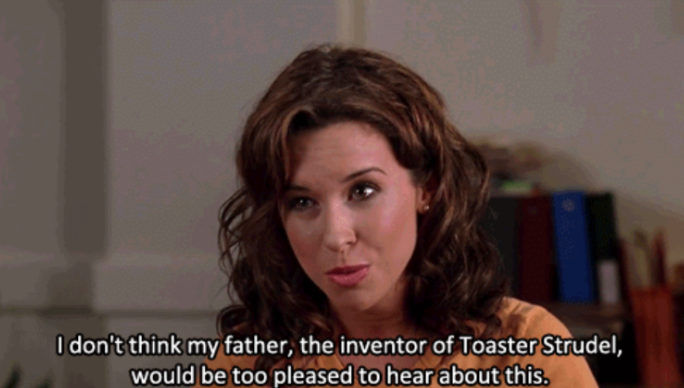
Even in 1997 Japan, that act is unbelievably inappropriate. Yet, in the context of this satire, it is perfect. The boy gains the courage to stop trying to kill himself and instead confront the queen bee’s mother, the haughty PTO president. Of course, since in this case a rotten apple didn’t fall far from a rotten tree, that appeal falls on deaf ears, and the final act of justice is when Onizuka’s students broadcast only slightly doctored recordings at the PTO meeting of all the things the queen bee has said under the assumption that her mother’s status makes her untouchable.
Satire, like horror, is not comprehensible without understanding its moral core. I don’t think Fujisawa is saying “teachers ought to help some students take revenge on other students”. Fujisawa is saying “look at the world you created, were only an impossible outrage can prevent a child from trying to kill himself”. Even though satire is intended to make us laugh, and GTO very much makes me laugh, behind it lies a just anger at injustices that lie unrectified and unremarked.
I don’t think you need to know these things to enjoy GTO, but I do think understanding them will help explain the runaway popularity of this series.
With Both Hands Classics | My other book reviews | Reading Log
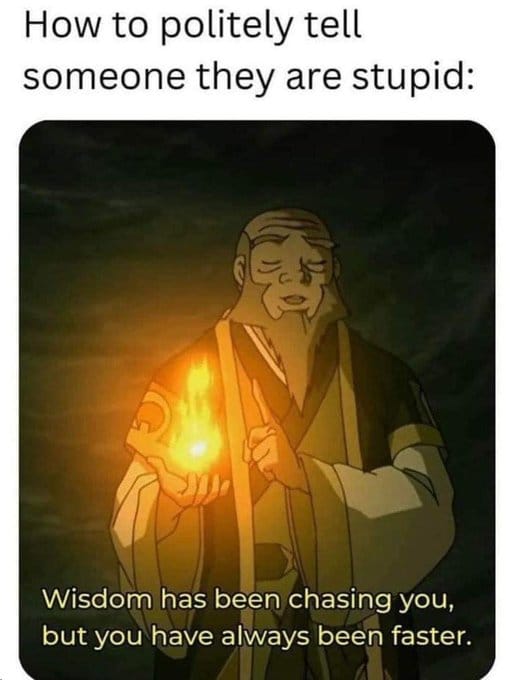
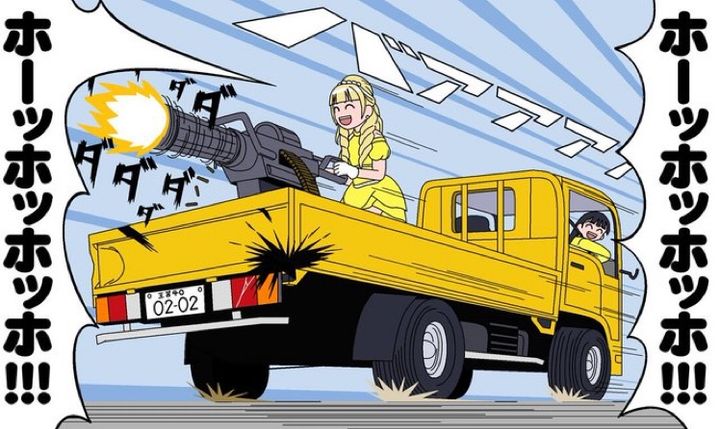
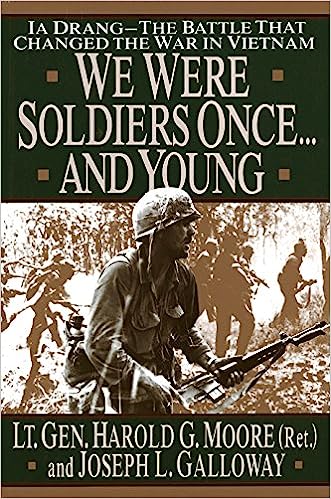
Comments ()